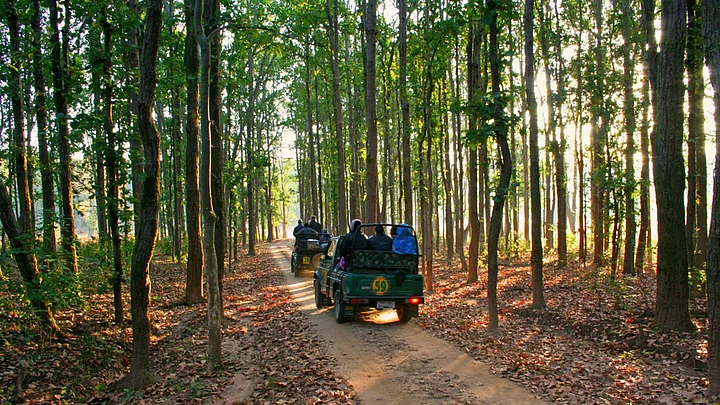Unprotected Wilds
- CAG report highlights inertia among forest and wildlife department staff in checking offences against wild animals
- It exposes weaknesses in preventive measures to make the environment safe for animals
- Report also reveals Madhya Pradesh government’s apathy towards wildlife sanctuaries
- The current management plan doesn’t have specific provision to arrest the declining tiger population
‘Ajab hai, gazab hai’ was an eye catching campaign launched by the Madhya Pradesh government to attract wild life tourism. It had worked well. But a report by the Comptroller and Auditor General has exposed the ground reality, indicating that the state government has been beating about the bush on the health of wildlife in the state.
There were several manmade reasons for the dwindling population of endangered animals in MP which supposedly thrives on wildlife tourism.
The CAG highlights inertia among forest and wildlife department in checking offences against wild animals. The online forest offence management system maintained by the department also says that “man-animal conflict resulted in (the) death of 3,595 wild animals due to poisoning, electrocution, accidents etc. besides killing of 102 human beings, injury of 2,050 and deaths of 5,881 cattle during 2009 to 2013.”
Due to non-declaration of corridors as ‘conservation reserves’, the gene flow of wildlife in the landscape was not ensured.
Dwindling Tiger Population
As per tiger population census, 2010, there were 262 tigers in Madhya Pradesh. The tiger population in 2010 remained stable but in Panna Tiger Reserve the number sharply decreased from 24 in 2006 to four in the 2010. Between January 2009 and May 2014, the death of 69 tigers were reported.
Of these, 17 tigers died due to various diseases, one killed by poachers, 19 succumbed to territorial fights, three because of poisoning, seven were electrocuted, four met with accidents, eight due to cannibalism, three died natural deaths and seven others died with no specific reasons given.
The CAG’s comment that death due to diseases, poaching, poisoning and electrocution were controllable, indicates weaknesses in preventive measures to make the environment safe for animals.
There was nothing on record to show that the forest and wildlife department conducted any study to analyse the reasons for the decline in the tiger population during 2006 to 2010 or taken remedial measures to arrest the declining trend. The current management plan doesn’t have specific provision to arrest the declining population, the CAG report laments.
Reckless With Blackbucks
In another glaring lapse on the part of state government, highlighted by CAG, is that blackbucks were translocated at Kanha Tiger Reserve without conducting habitat viability study and without immobilising them, resulting in their high mortality.
The Ministry of Environment and Forest (MoEF) in June 2011 allowed translocation of 50 blackbucks to Kanha Tiger Reserve (TR) from Narsinghpur district with the stringent condition that habitat viability analysis of relocation sites be carried out before undertaking the translocation of blackbucks.
Within a month in July 2011, the Chief Wildlife Warden (CWLW), the Kanha field director to shift 50 blackbucks after chemically immobilising them, as stipulated in the permission order.
However, CAG found that 50 blackbucks were shifted to Kanha TR from Seoni district on November 14, 2011, without conducting habitat viability assessment. The Kanha field director reported in January 2012 that the blackbucks were shifted to another sanctuary without immobilising them.
Procedures Flouted
It resulted in grave consequences. Of the 50 translocated blackbucks, 22 died in enclosures. However, the MoEF reported in January 2012 that the grass was hard and habitat was unbearable for the blackbucks. Thus, non-adherence to MoEF directions resulted in high mortality of blackbucks and endangered the survival of the remaining blackbucks due to adverse conditions at the new site, the CAG adds.
Bittu Sehgal, a noted conservationist engaged in various struggles for wildlife protection, says there’s a “fundamental flaw in the developmental ambitions of India’s developers. They believe that our ecological future depends on a stable economy...when the truth is exactly the opposite.”
Sanctuaries in Trouble
The CAG also exposes the state government’s apathy towards wildlife sanctuaries too. Increasing commercial activities and new residential infrastructures being constructed in core areas has affected efforts for wildlife conservation and habitat protection.
Besides, the Madhya Pradesh government has further “jeopardised the tigers and other wildlife by bullishly going ahead with the Ken-Betwa river linking, which will drown the heart of Panna, and by cutting through the vital Kanha-Pench-Satpura corridors by expanding highways,” Prerna Singh Bindra, former National Board for Wildlife member, says.
Expressing her concern at the pathetic wildlife conditions in MP, she says:
the state government has failed to recognise the sanctity of corridors and the fact that its tigers won’t survive in isolated reserves. It has simply forsaken other endangered wildlife, particularly the Great Indian bustard and the lesser florican, the former is likely locally extinct, and the latter almost there, from sanctuaries formed for their protection.
—Prerna Singh Bindra, former National Board for Wildlife member
(The writer is a Delhi-based senior journalist)
